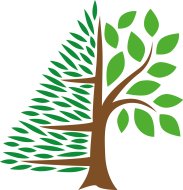English introduction
On the 1st of February 2006 the ‘Seeds and Plant Materials Act 2005’ has entered into force. From this date the Board for Plant Varieties is the Official Body that is responsible for the registration of forest stands and varieties.
The Board for Plant Varieties maintains the ‘Rassenlijst Bomen’ (List of recommended varieties and provenances of trees). This 10th Rassenlijst Bomen includes the National Register of approved Basic material of species subject to the EU Directive 1999/105/EC, which controls the marketing of Forest Reproductive Material in the EU and the recommended list of varieties and provenances of the so-called ‘non-EU species’. The main objective of this list is to inform users (and nurserymen, and seed merchants) about the characteristics of the different varieties and provenances that can be recommended. Varieties and provenances that do not meet the requirements of the Directive are not listed.
Varieties and provenances of these species are listed only if approved in the categories ‘Source identified’, ‘Selected’, ‘Qualified’ or ‘Tested’. Autochthonous provenances of trees and shrubs for ecological purposes are listed in the category ‘Source identified’ unless they fulfil the requirements for approval in one of the other categories. This category is reserved for autochthonous provenances only.
The ‘Rassenlijst Bomen’ is constantly reviewed and will be updated every 3 months. See the home page for the current version of the list.
You can view the ‘Rassenlijst Bomen’ by:
- Using the search facility on the home page to find any registered material (stand, seed orchard, clone) by typing a genus, species or clone name in the search box (Scientific or Dutch name, e.g. Quercus robur or zomereik).
- Clicking a species on the ‘Soorten’ button . If the species you are looking for is not on this list, there are currently no registered stands, seed orchards or clones of approved basic material of this species.
All basic material (provenances, seed orchards, clones etc.) have a provenance code and name, which gives information about category and origin of the material, for instance Pinus sylvestris L., NL.S.3.1.02-03 (provenance code), Ossendrecht-03 (provenance name) means:
NL: region of provenance (The Netherlands)
S: category of FRM (Selected)
3: sub region (South of the Netherlands)
1: district (Markiezaat)
02: provenance name (Ossendrecht)
03: individual stand (De Moretusbossen)
As a rule, reproductive material derived from basic material that is not listed cannot be certified by the Naktuinbouw and therefore cannot be marketed. Exception is made for the basic material mentioned in Lists of other Member States, and basic material admitted under an EU Commission Decision on temporarily marketing of forest reproductive material not satisfying the requirements of Council Directive 1999/105/EC. These limitations do not apply to species not mentioned in the EU Directive.
In some years and/or for some species, not enough material from Dutch sources is available to meet the demand. For many coniferous species, sufficient information about foreign material is available to recommend certain foreign provenances over others. See recommendations on foreign provenances.
Some translation of terms
Herkomst = Provenance
Beheerseenheid = Forest or estate
Lokale naam = Local name
Locatie = Location
NB. en OL. = Lat. N. and Long. E.
Coördinaten = Coordinates
Hoogte = Elevation
Opp. = Area
Oorspronkelijk = Original
Doelstelling = Purpose
Productie = Production
Ecologie = Ecology
Jaar van aanleg = Year of planting
Eigenaar = Owner
Beheerder = Manager
Opmerkingen = Remarks
Nederlandse herkomsten = Dutch provenances
Buitenlandse herkomsten = Foreign provenances
Zaadgaard = Seed orchard
Getest uitgangsmateriaal = Tested basic material
Gekeurd uitgangsmateriaal = Qualified basic material
Geselecteerd uitgangsmateriaal = Selected basic material
Uitgangsmateriaal van bekende origine = Source identified basic material
